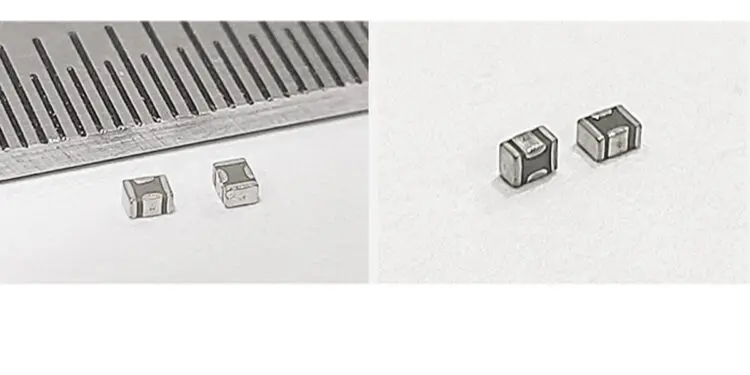Samsung Electro-Mechanics developed 0.65mm ultra-slim 3-socket MLCC, which is 18% thinner than previous products, and began supplying them to global smartphone companies.
There has been an increase in requests for slimmer components with the increase in the number of components and reduction in thickness of recent smartphones, with multi-functional and high-performance requirements, including 5G mobile communication and multi-cameras.
The slim 3-socket MLCC, developed by Samsung Electro-Mechanics, is the thinnest among 1209-size 3-socket MLCC, with size of 1209 (length 1.2mm, width 0.9mm) and thickness of 0.65mm. Previous products had width of 0.8mm due to limitations in minimizing the internal dielectric layer. Samsung Electro-Mechanics increased the freedom of smartphone design by reducing the previous thickness by 18% by applying independent thin layer molding technology and superfine dielectric layer.
In particular, given the characteristics of the 5G smartphone, which has high-processing speed, it is a component that has added earth sockets to efficiently remove high-frequency noise occurring from the AP (Application Processor) power unit, and it has increased internal space efficiency by replacing 1 3-socket MLCC with 3~4 general MLCCs.
Doo Young Kim, Head of the Component Unit at Samsung Electro-Mechanics, revealed, “There has been a massive increase in miniature, high-performance, and highly-reliable MLCC demand with the commercialization of 5G mobile communication and electrification of automobiles. Samsung Electro-Mechanics will secure a leading position in the market by strengthening its distinctive technology, including the internal development of core materials and internalization of equipment, and manufacturing capabilities”.
- 3-socket MLCC adds one additional earth socket to the general MLCC and is a product that allows for easy reduction in high-frequency power noise.
- socket (端子): The end area that is attached in order to attach the electrode to the input or output area of the current for electric circuits or electric devices
- earth (接地): connecting to the ground or reference point by means of a conductor (an object capable of electricity flow) in an electrical circuit or part of an electrical equipment































